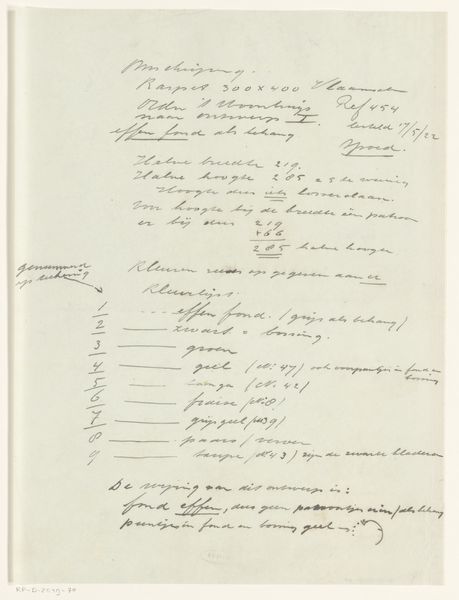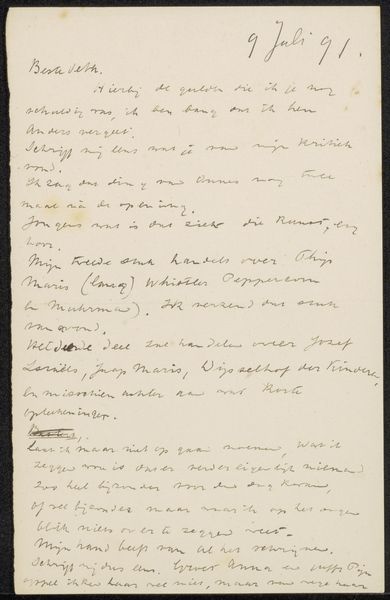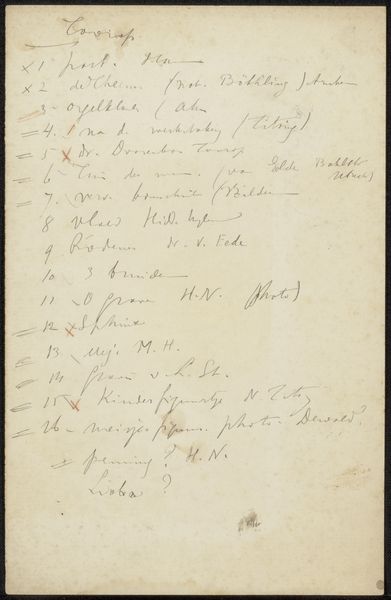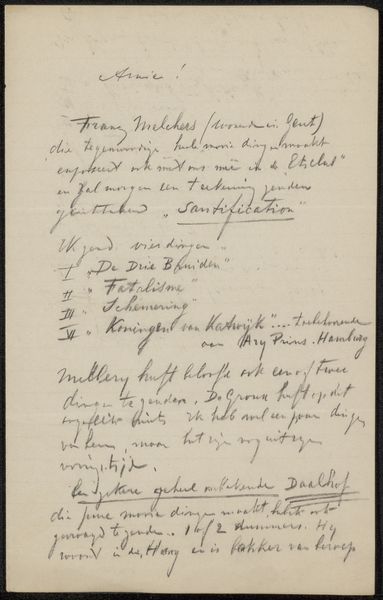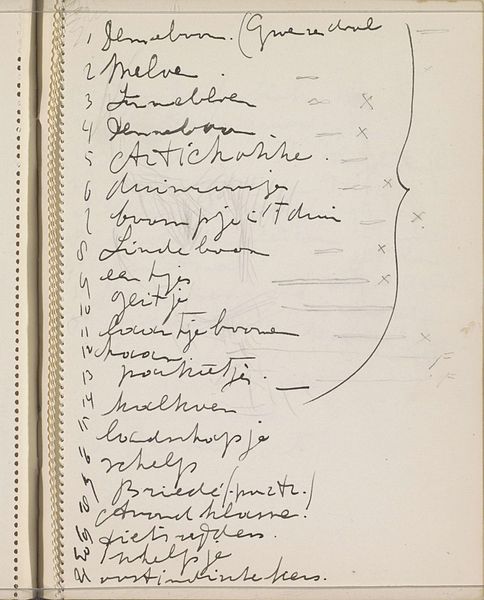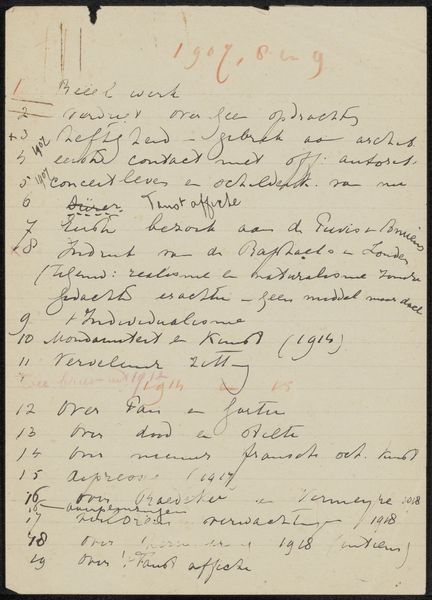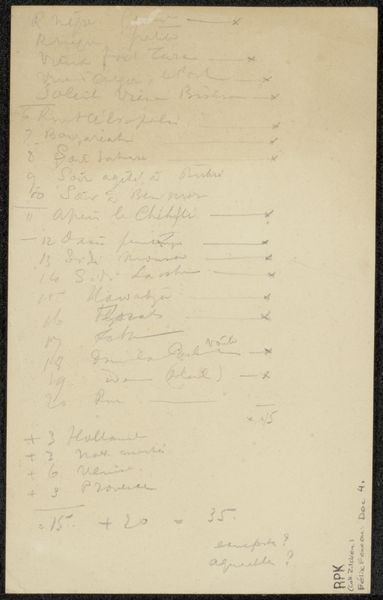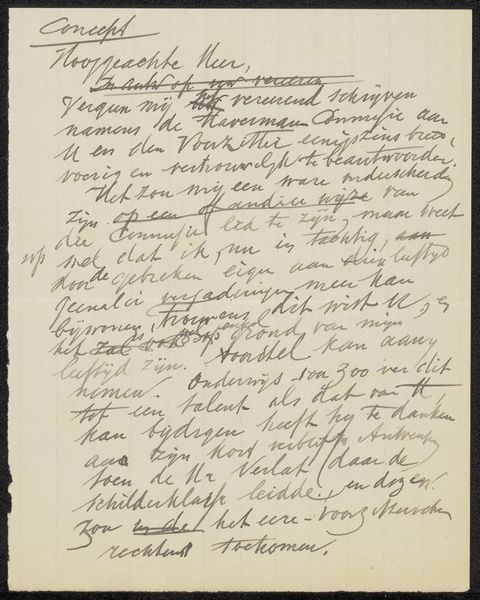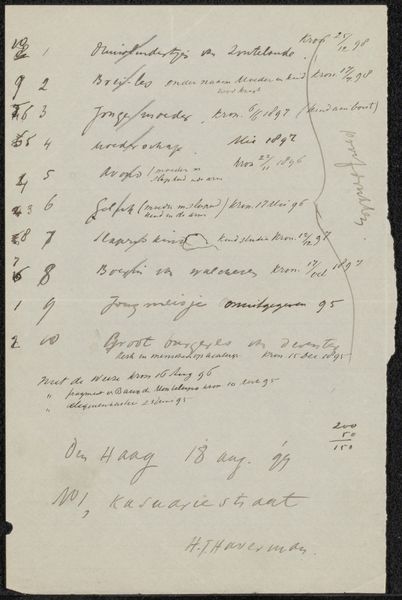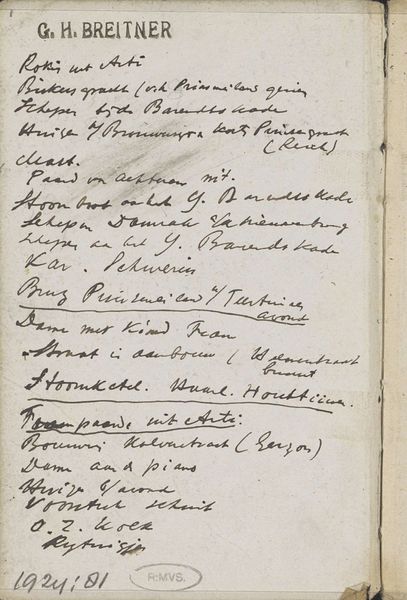
drawing, paper, ink
#
drawing
#
hand written
#
art-nouveau
#
hand-lettering
#
hand drawn type
#
hand lettering
#
paper
#
personal sketchbook
#
ink
#
idea generation sketch
#
hand-written
#
hand-drawn typeface
#
sketchbook drawing
#
sketchbook art
Copyright: Rijks Museum: Open Domain
Curator: Here we have "Lijst met objecten," or "List of Objects," a drawing in ink on paper by Carel Adolph Lion Cachet, created around 1897-1898. It's currently held in the Rijksmuseum collection. Editor: It strikes me immediately as quite intimate, like a glimpse into the artist's personal world. The list format feels casual, and the handwriting is so delicate. There’s a certain warmth despite its monochrome palette. Curator: Precisely. Cachet, deeply immersed in the Art Nouveau movement, was fascinated by typography and decorative arts. This drawing offers insight into his design process, revealing his material considerations and preliminary thoughts on the types of objects he was planning to make or acquire. This sheet acted as a visual record, tying design to practical application. Editor: And the list itself provides a fascinating glimpse into the material culture of the period, no? These objects – small carpets, tables, flower stands - what do they reveal about social rituals, about the experience of interior spaces during the late 19th century? Were these mass-produced objects, or was he perhaps more involved in a "handmade" art production, closer to William Morris? Curator: That’s a very important distinction. While influenced by figures like Morris, Cachet balanced Arts and Crafts ideals with more commercial opportunities. Note that his approach here really bridges "high art" with practical craftsmanship. His lettering, his hand-drawn typeface anticipates design movements. Editor: It's intriguing how this seemingly simple list challenges conventional art categories. Is it purely a preparatory sketch, or does it hold value as a finished work, given its aesthetic qualities and the artist's careful attention to layout and lettering? What’s striking to me is that blurring of boundaries between artistic planning, material inventory, and final artwork, a phenomenon still relevant today as much as it was relevant at the turn of the last century. Curator: A really good point. Seen from our contemporary perspective, Lion Cachet seems to anticipate current discourse. The fluidity and apparent lack of hierarchy of his written thoughts challenge rigid notions of what constitutes "art" versus craft and how we understand creative labor. Editor: Exactly! Reflecting on "Lijst met objecten", I see an effort to elevate everyday objects through a conscious design process. It encourages us to reconsider what gets included and what gets left out from the conventional cannon. Curator: Absolutely. And I think Cachet encourages us to rethink the potential of art to shape—and be shaped by—our social and material world.
Comments
No comments
Be the first to comment and join the conversation on the ultimate creative platform.
